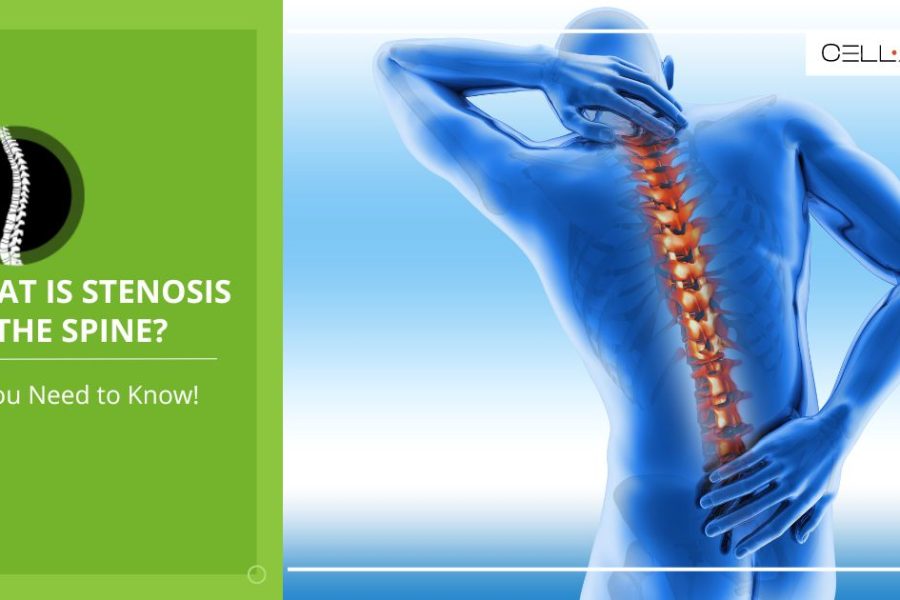Published on: November 25, 2024 | Updated on: January 18, 2025
Elbow pain when bending and straightening your arm is a common issue experienced by many people. Seemingly easy tasks such as closing a door or holding a mug might trigger elbow pain.
While the most common causes, such as joint stiffness and repetitive strain injury, aren’t that serious, some underlying problems with the complex structures might present complexities.
The elbow is one of the most frequently exercised joints, which makes it prone to injury. It facilitates movement, allowing the four primary functions: flexion, extension, pronation, and supination.
If you’re experiencing elbow pain when bending and straightening the arm, look into the possible causes and treatment methods here.
Anatomy of the Elbow Joint
The elbow is a complex joint with three bones: the humerus, radius, and ulna. The humerus is the upper arm bone, while the radius and ulna are the forearm bones. These three bones meet at the elbow to form a joint.
When you bend your arm, you can feel three bumps at your elbow joint. Any injury to the tendons anchoring the muscles to these two bumps of the elbow causes pain when you straighten or bend your arm. The two bumps on the elbow are the lateral epicondyle and the medial epicondyle.
The lateral epicondyle is the elbow bump on the outer side. The muscles attached to this bump are on the back of your forearm.
These muscles curl the wrist backward. Pain in this bump is called lateral epicondylitis.
The medial epicondyle is the bump on the inner side of the elbow. To this point, the muscles present at the front of the forearm are attached, which curl the wrist up. Pain in this bump is called medial epicondylitis.
Six Reasons You Feel Elbow Pain When Bending and Straightening Your Arm
Here are the most common reasons for elbow pain when you bend or straighten your arm.
Tennis Elbow
Just like the impact of playing tennis places pressure on the elbow joint, other similar repetitive movements also strain the elbow. Tennis elbow or lateral epicondylitis is among the most common causes of elbow pain.
Lateral epicondylitis occurs when the tendons on the outer part of the elbow become inflamed. Inflammation from an injury or repetitive arm movements can also cause tennis elbow. The pain radiates to the forearm.
Golfer’s Elbow
Elbow pain when bending or straightening your elbow could be due to the golfer’s elbow. Also called medial epicondylitis, a golfer’s elbow occurs when the tendons on the inner side of the elbow become inflamed.
This is a joint overuse injury resulting from repetitive arm movement. Wear and tear affecting the joint causes this issue.
Improper flexion and extension, injury, or weightlifting can cause a golfer’s elbow. Usual symptoms include radiating pain from the elbow to the forearm, inflammation, heated sensation, and redness.
Olecranon Bursitis
Does the pain seem to originate from the point of your elbow? The bursa is a fluid-filled sac that cushions the elbow joint.
Pressure from repetitive movement causes inflammation of the bursa, which causes elbow pain when bending and straightening the arm.
Symptoms of olecranon bursitis are swelling, inflammation, redness, and pain around the elbow area.
Ulnar Nerve Entrapment
The nerve traveling down your neck into your hand is called the ulnar nerve. When the ulnar nerve constricts, it causes pain that radiates down your forearm.
A common spot for nerve constriction is behind the elbow, on the inner side. Symptoms of ulnar nerve entrapment are numbness, tingling sensation in the fingers and hands, and radiating elbow pain when bending and straightening the arm.
Elbow Osteoarthritis
The elbow joint has cartilage that is worn due to repetitive movements. The natural wear of the cartilage triggers joint inflammation, commonly called elbow osteoarthritis. Individuals with an injured elbow are at a higher risk for developing elbow osteoarthritis.
Joint Dislocation
A sharp elbow pain when bending or straightening your arm can be caused by joint dislocation, although it is rare.
The elbow joint dislocation results from an injury where you fall on the arm while it is fully extended. Noticeable swelling and bruising accompany a dislocated elbow joint with intense pain.
Home Treatments for Elbow Pain
If you feel elbow pain when bending or straightening your arm, some home remedies might help minimize discomfort.
Rest
One of the best ways to relieve elbow pain is to rest. You should avoid strenuous activities that cause pain.
Skip weightlifting, bench presses, push-ups, and all other exercises that impact your joints. You should also avoid playing sports such as tennis, which puts pressure on the elbow.
Medication
Muscle relaxants can relieve the tension in the muscles around the elbow, while anti-inflammatory medicines reduce inflammation and pain.
You can take over-the-counter pain relievers to ease discomfort.
Apply Ice Packs
If your elbow pain is from a recent injury, it is recommended that you ice the area for 15-20 minutes every three to four hours.
Icing numbs the area and provides temporary pain relief. Avoid placing the ice pack directly onto the skin; instead, wrap it in a cloth or a towel that provides constant cooling without the risk of frostbite.
Stretching
Gently stretching your arm increases flexibility. If you feel elbow pain when bending and straightening the arm, gently practice elbow flexion and extension. This reduces the strain and minimizes pain.
Wear an Elbow Brace
If moving your arm puts pressure on the elbow, your doctor may recommend that you wear an elbow brace. The brace keeps your elbow in place and reduces the strain on the tendon and the muscles.
How to Prevent Elbow Pain?
Here are some ways to prevent elbow pain.
- Wear sports gear when you play sports that put pressure on the joints
- Perform warm-up exercises before lifting heavy weights
- Take regular breaks when performing repetitive tasks
- Maintain proper posture to rest your elbow
- Do strengthening exercises
- Use proper body mechanics
- Do joint mobilization stretches
When to See a Doctor
While most common causes of elbow pain resolve on their own or through home remedies, it is essential to seek medical attention if the pain becomes severe.
Your doctor will ask for your medical history. Upon physical examination, the doctor may ask you to perform specific actions to assess the range of motion.
This may include elbow extension, flexion, and straightening your arm out to diagnose the cause of pain. Early intervention can prevent long-term complications!
Sources
Footnotes
- Patiño JM, Corna AR, Michelini A, Abdon I, Ramos Vertiz AJ. Elbow Posterolateral Rotatory Instability due to Cubitus Varus and Overuse. Case Rep Orthop. 2018 Aug 5;2018:1491540.
- Lenich A, Pfeifer C, Proier P, Fleer R, Wijdicks C, Roth M, et al. Reattachment of the flexor and extensor tendons at the epicondyle in elbow instability: a biomechanical comparison of techniques. BMC Musculoskelet Disord. 2018;19:432.
- Ahmad Z, Siddiqui N, Malik SS, Abdus-Samee M, Tytherleigh-Strong G, Rushton N. Lateral epicondylitis: a review of pathology and management. Bone Joint J. 2013 Sep;95-B(9):1158-64.
- Papatheodorou LK, Baratz ME, Sotereanos DG. Elbow arthritis: current concepts. J Hand Surg Am. 2013 Mar;38(3):605-13.
- Martinez-Catalan N, Sanchez-Sotelo J. Primary Elbow Osteoarthritis: Evaluation and Management. J Clin Orthop Trauma. 2021 Aug;19:67-74.
References
- Repetitive Strain Injury (RSI). NHS. Accessed 09/13/2024.
- Elbow Joint. Cleveland Clinic. Accessed 09/13/2024.
- Elbow Pain Causes. Mayo Clinic. Accessed 09/13/2024.
- Medial Epicondylitis. StatPearls. Accessed 09/13/2024.
- Elbow Olecranon Bursitis. Cleveland Clinic. Accessed 09/13/2024.
- Dislocated Elbow. Cleveland Clinic. Accessed 09/13/2024.
- When to Use Ice or Heat for Injuries. UnityPoint Health. Accessed 09/13/2024.
- Golfer’s Elbow Brace. Cleveland Clinic. Accessed 09/13/2024.
CELLAXYS does not offer Stem Cell Therapy as a cure for any medical condition. No statements or treatments presented by Cellaxys have been evaluated or approved by the Food and Drug Administration (FDA). This site contains no medical advice. All statements and opinions are provided for educational and informational purposes only.
Dr Pejman Bady
Author
Dr. Pejman Bady began his career over 20 years ago in Family/Emergency Medicine, working in fast-paced emergency departments in Nevada and Kansas. He has served the people of Las Vegas as a physician for over two decades. Throughout this time, he has been met with much acclaim and is now the head of Emergency Medical Services in Nye County, Nevada. More about the doctor on this page.
Dr Pouya Mohajer
Contributor
Pouya Mohajer, M.D. is the Director of Spine and Interventional Medicine for CELLAXYS: Age, Regenerative, and Interventional Medicine Centers. He has over 20 years of experience in pain management, perioperative medicine, and anesthesiology. Dr. Mohajer founded and is the Medical Director of Southern Nevada Pain Specialists and PRIMMED Clinics. He has dedicated his career to surgical innovation and scientific advancement. More about the doctor on this page.







